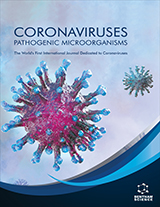Abstract
With the global pandemic, COVID-19, spurred on by the "Severe Acute Respiratory Syndrome Corona Virus-2 (SARS-CoV-2)," India has been greatly impacted. With a rare fungus known as Mucormycosis, the second wave of COVID-19 significantly impacted the Indian population after the initial phase. Mucormycosis is also known as "black fungus" because of the necrosis of infected skin tissue, which causes it to become black. It is caused by Mucoromycetes, members of the Zygomycetes order and the Mucorales class. COVID-19's effects on various comorbid ailments, such as diabetes, heart problems, and immune-compromised states, range from mild to severe to life-threatening. Mucormycosis moulds are more likely to affect patients who have hyperglycemia, ketoacidosis, solid organ or bone marrow transplantation, liver cirrhosis, or neutropenia. To eliminate Mucormycosis, four primary variables must be addressed: early diagnosis, eradication of predisposing factors, prompt antifungal treatment with surgical removal of all diseased tissues, and adjuvant therapies. Here, the present review discusses the clinical aetiology, symptoms, diagnosis, and therapy for black fungus. The study leads to the conclusion that the use of immunosuppressant medication to combat COVID-19 also elevates the possibility of being infected with mucormycotic.
Graphical Abstract
[http://dx.doi.org/10.1016/j.cscee.2020.100029]
[http://dx.doi.org/10.1056/NEJMcp2009249] [PMID: 32329974]
[http://dx.doi.org/10.1007/s11046-020-00472-7] [PMID: 32737746]
[http://dx.doi.org/10.3201/eid2611.203504] [PMID: 32852265]
[http://dx.doi.org/10.3390/jof6040265] [PMID: 33147877]
[http://dx.doi.org/10.1016/j.jmii.2021.12.007] [PMID: 35074291]
[http://dx.doi.org/10.1016/j.idc.2021.03.009] [PMID: 34016285]
[http://dx.doi.org/10.1111/myc.13256] [PMID: 33590551]
[http://dx.doi.org/10.1016/S1473-3099(19)30312-3] [PMID: 31699664]
[http://dx.doi.org/10.1002/jmv.27207] [PMID: 34260073]
[http://dx.doi.org/10.1016/j.cegh.2021.100900] [PMID: 34746515]
[http://dx.doi.org/10.3389/fimmu.2020.01061] [PMID: 32574262]
[http://dx.doi.org/10.1016/j.cca.2020.06.017] [PMID: 32531256]
[http://dx.doi.org/10.1186/s13613-020-00689-1] [PMID: 32506258]
[http://dx.doi.org/10.4103/0974-2700.42203] [PMID: 19561989]
[http://dx.doi.org/10.4103/jrms.jrms_1090_21] [PMID: 36092491]
[http://dx.doi.org/10.1016/j.crmicr.2021.100057] [PMID: 34396355]
[http://dx.doi.org/10.1086/590004] [PMID: 18611163]
[http://dx.doi.org/10.1093/cid/cir868] [PMID: 22247446]
[http://dx.doi.org/10.2217/fmb.14.23] [PMID: 24957094]
[http://dx.doi.org/10.1093/mmy/myx101] [PMID: 29538730]
[http://dx.doi.org/10.3390/jof5030056] [PMID: 31269718]
[http://dx.doi.org/10.1182/blood-2011-03-316430] [PMID: 21622653]
[http://dx.doi.org/10.1136/jcp.2004.024703] [PMID: 16254108]
[http://dx.doi.org/10.1007/s10096-005-0078-7] [PMID: 16416267]
[http://dx.doi.org/10.3390/microorganisms9071518] [PMID: 34361953]
[http://dx.doi.org/10.1128/CMR.13.2.236] [PMID: 10756000]
[PMID: 14601848]
[http://dx.doi.org/10.3314/jjmm.44.163] [PMID: 12913805]
[PMID: 14723256]
[http://dx.doi.org/10.3324/haematol.2016.152900] [PMID: 28011902]
[http://dx.doi.org/10.1002/phar.1652] [PMID: 26598096]
[http://dx.doi.org/10.1016/S1473-3099(16)00071-2] [PMID: 26969258]
[http://dx.doi.org/10.2147/CPAA.S60933] [PMID: 26730212]
[http://dx.doi.org/10.1086/589857] [PMID: 18558882]
[http://dx.doi.org/10.1128/CMR.18.3.556-569.2005] [PMID: 16020690]
[http://dx.doi.org/10.1172/JCI82744] [PMID: 27159390]
[http://dx.doi.org/10.1080/07391102.2022.2048077] [PMID: 35253616]




























